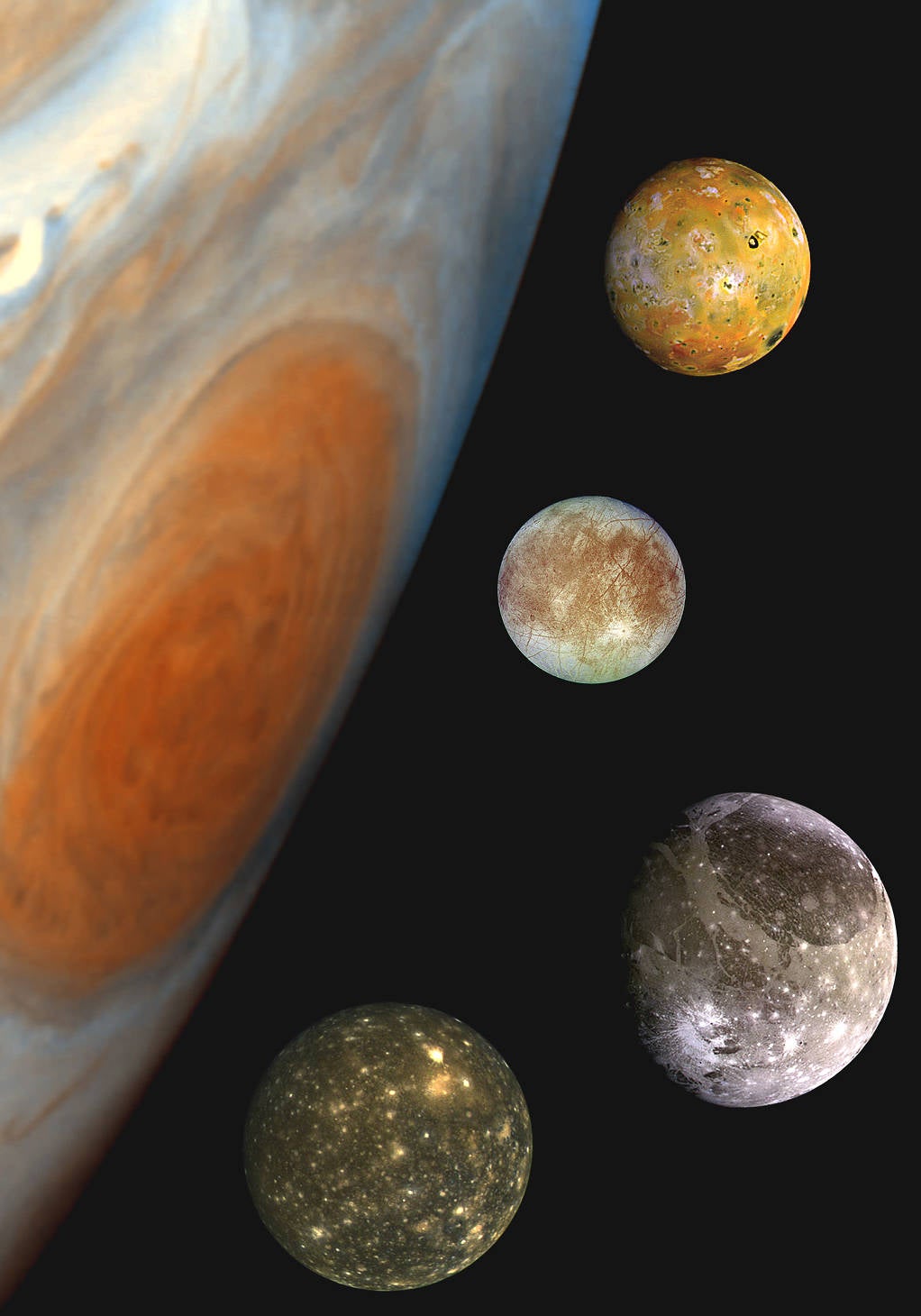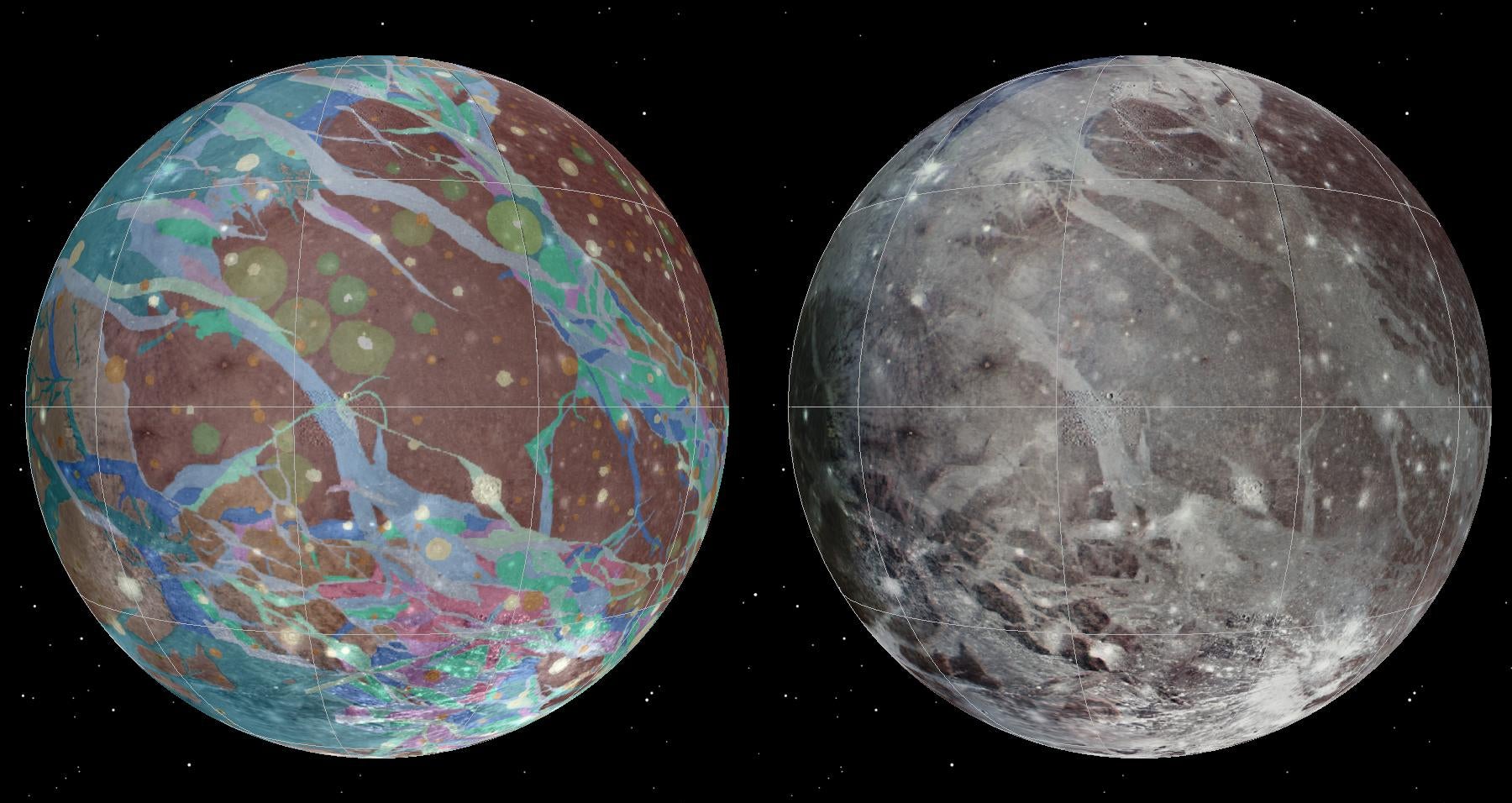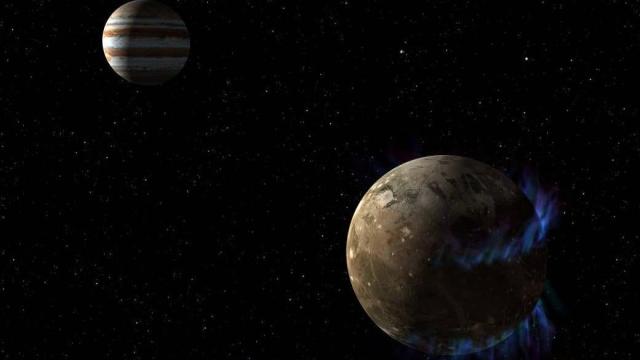NASA’s Juno spacecraft, in orbit around Jupiter since 2016, made a close flyby of the planet’s moon Ganymede at 3:35 a.m. AEST on Tuesday. Its goal: to take stock of the icy orb’s composition and magnetic field, among other measurements.
“Juno carries a suite of sensitive instruments capable of seeing Ganymede in ways never before possible,” said Juno principal investigator Scott Bolton of the Southwest Research Institute in San Antonio, in a NASA release. “By flying so close, we will bring the exploration of Ganymede into the 21st century, both complementing future missions with our unique sensors and helping prepare for the next generation of missions to the Jovian system.”

Launched in 2011, the Juno spacecraft was charged with scrutinizing our solar system’s largest planet, Jupiter, to better understand the gas giant’s makeup and evolution as well as its many enigmatic moons. During the flyby today, assuming all went as planned, Juno used instruments designed for Jupiter to unpack the mysteries of Ganymede. The craft’s microwave radiometer, usually focused on the movement and chemical composition of Jupiter’s atmosphere (to depths of nearly 563 km!), peered deep into Ganymede, a moon about the size of Mercury, to understand exactly what goes into the orb’s water-ice crust. In the NASA release, Bolton noted that different patches of Ganymede’s outer shell are light and dark, indicating some of the ice may be more than just frozen water.
But it’s not just Ganymede’s visible features that interest scientists. Juno’s radio transponder was set to blast radio waves at the moon’s atmosphere, in hopes that the outer layer, called the ionosphere, will slightly distort the waves, a difference that could be picked up by observatories on Earth. “If we can measure this change, we might be able to understand the connection between Ganymede’s ionosphere, its intrinsic magnetic field, and Jupiter’s magnetosphere,” said Dustin Buccino, a signal analysis engineer for the Juno mission, in the same release. Beyond that, noise in the images collected by Juno’s cameras will be used to discern information about Ganymede’s radiation environment, while the visible light will help researchers better pinpoint regions of interest on the surface.
Juno’s work builds on that of the Galileo spacecraft, which orbited Jupiter for nearly eight years and made flybys of all the planet’s major moons. That mission concluded in 2003, when Galileo was commanded to dive into Jupiter’s atmosphere, destroying the craft. It was Galileo that detected Ganymede’s magnetic field, an observation that led to Juno’s work today.

Due to how quickly the flyby will unfold — Juno will go past at 19 km per second — the craft will have only about 25 minutes to snap images of the moon before it yet again becomes a distant speck of light.
The next generation of Jupiter missions are already in motion. The European Space Agency’s JUpiter ICy moons Explorer (JUICE, an acronym clearly achieved through some Simone Biles-level gymnastics) and NASA’s Europa Clipper are set to launch in 2022 and 2024, respectively. Those launch dates will set the spacecraft to reach Jupiter’s orbit around 2030, about the same time that NASA’s Venus missions will launch. Yeah, 2030 feels like forever from now, but at least we’ll — hopefully — have the crewed Artemis lunar missions to enjoy in the meantime.
